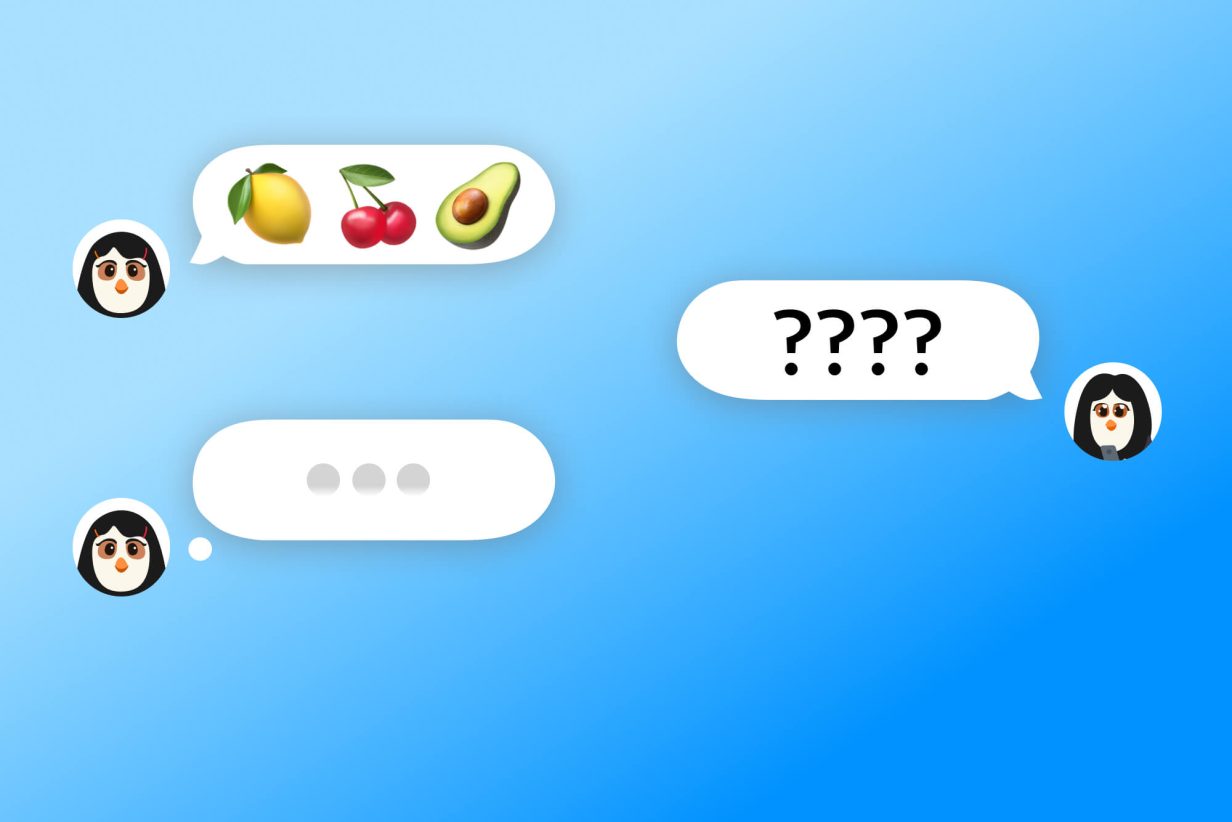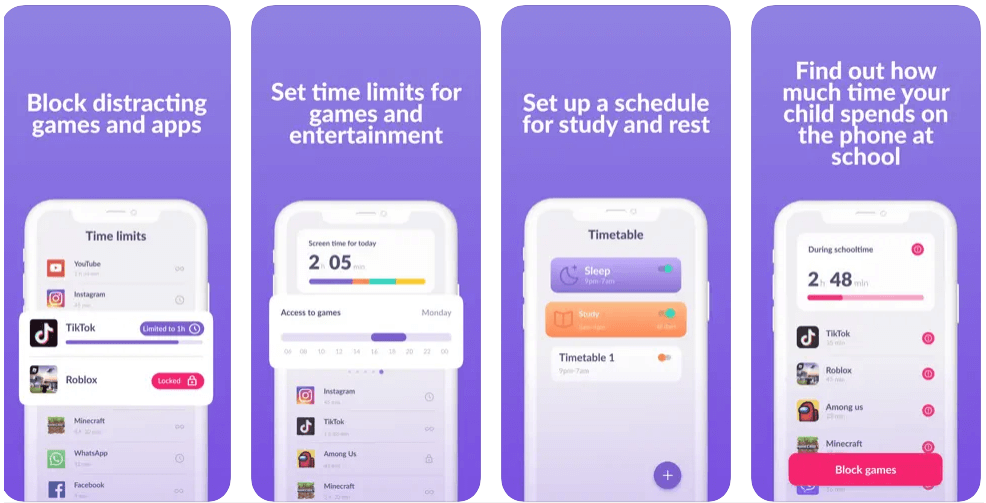From Apples to Pineapples: A Parent’s Guide to Emoji Fruit Meanings

Understanding fruit emoji meanings can be a bit tricky for parents. It’s like just when you think you’ve got the hang of what your kids are texting, the meanings of these emojis keep changing. With new emojis popping up all the time, it’s a bit of a puzzle, and, well, the hidden meanings behind those fruit symbols seem to switch around a lot.
Contents:
- What is the Trend and Where Did it Come From?
- What Does the Fruit Emoji Mean in a Text?
- Meanings on Snapchat
- How to Keep Your Child Safe Online
- FAQs
What is the Trend and Where Did it Come From?
There are over 3,000 emojis available to users, and more than 900 million are sent daily. 86% of these are sent by users under the age of 24. One of the main groups of these digital images is food and drink emojis, and we’re going to take a look at fruit emoji meanings below.
Less than 10% of people who regularly use emojis use peach as a fruit. Emojis have transcended from being mere accents to becoming a whole new language for the younger generation, a linguistic evolution fueled by technological advancements. A complete, ever-changing emoji dictionary has emerged.
In a fast-paced world where quick messages demand swift responses, emojis seamlessly fit in, eliminating the need for lengthy texts. A smiley face emoji, for example, can replace a longer message indicating happiness or approval.
For today’s youth, it’s not just a trend; emoji slang is a way of communicating. This shift gained momentum with the rise of mobile apps like Snapchat and TikTok, as well as emoji keyboards, providing a shorthand to convey messages to friends and followers.
What Does the Fruit Emoji Mean in a Text?
Tada Images/Shutterstock.com
Fruit emojis have various meanings, some a little more lewd than others. Here are a few examples of how your teens could be using fruit emojis in texts with friends:
- Lemon 🍋 — This little yellow fruit can symbolize two things: it might represent life’s challenges, giving a sour twist to the conversation. Alternatively, it could be a nod to Beyoncé’s song “Lemonade,” a meaning often embraced by fans in a more positive light. When combined with a smiley face emoji, it can mean positive, zingy energy or denote a sweet and sour vibe.
- Banana 🍌— When it comes to emoji meanings, this is used to refer to Not Safe For Work or NSFW content.
- Cherries 🍒 — In the emoji dictionary, cherries can be used as the symbol for breasts or virginity.
- Peach 🍑 — The peach emoji refers to curvaceous buttocks. Combined with a smiley face, it can signify contentment or sweet joy.
- Pineapple 🍍 — Would be used by those who refer to their relationships as complicated.
- Eggplant 🍆 — In emoji slang, the eggplant emoji is used as an innuendo for the penis.
- Avocado 🥑 — Is one of the newer emojis youngsters use to depict their better half. When used in combination with a smiley face emoji, it’s often connected to healthy, wellness vibes.
- Melon 🍈 — This emoji may be used as part of sexual slang, suggesting sexual activity.
Some more emoji fruit meanings:
- Watermelon 🍉 — In the emoji dictionary, the watermelon emoji typically represents the refreshing fruit. It might also be used to subtly indicate a summer vibe or cool atmosphere.
- Strawberry 🍓— Beyond its fruity connotation, the strawberry emoji can be employed to symbolize a flirtatious or romantic mood.
- Grapes 🍇 — Often incorporated in emoji sequences to denote a celebratory or joyful atmosphere, grapes take on a symbolic role in various contexts.
- Orange 🍊 — While typically representing the citrus fruit, the orange emoji might be used to convey a vibrant and energetic mood.
- Kiwi 🥝 — Apart from being a fruit, the kiwi emoji can be employed to represent uniqueness or a distinctive quality. When used alongside a smiley face emoji, it may denote happiness with life in general.
- Tomato 🍅 — Often used in conversations about healthy living, gardening, or cooking (sometimes in combination with a smiley face), according to the emoji dictionary, the tomato emoji may also be used to denote disapproval.
It’s not just fruit emojis that can hold hidden meanings. Other food categories, such as fast food, can also have lewd or sexual connotations. For example, the hotdog 🌭 emoji, while often used innocently, can be used to insinuate male genitalia. The same is true for the fast food snack, burritos.
Read also: Understanding Emoji Slang.
Meanings on Snapchat

Mike_shots/Shutterstock.com
Fruit and other food emojis on Snapchat allow users to share their relationship status. For example, cherries🍒 mean that your contact is in a stable, happy relationship, while a strawberry🍓 implies that the person struggles to find the right partner. While there are no hard and fast rules for using emojis on Snapchat, youngsters view them as a fun way to communicate.
In food and drink emojis, a lemon🍋 on Snapchat (and other social media platforms) means single and not looking, a pineapple🍍 is again used for a complicated relationship, a green apple🍏 means engaged, a blueberry🫐 means single, and, in emoji slang, a banana🍌 signifies that a person is married. It’s also important to be aware that food emojis can be used alongside others, such as the skull or smiley face emoji, to create new layers of meaning.
How to Keep Your Child Safe Online
As parents, we must face the fact that children will spend more time online in the digital age. It is essential to make sure their experience in the digital space remains a positive one. Here are three things parents can do to help their child transition positively into the online world:
- Set ground rules: Talk to your children about the dangers lurking online. Let children know that anything that goes online will stay there forever and that it’s essential to have a positive digital footprint.
- Technology as protection: Teach your child to keep their personal information private. Help your child set their device’s privacy settings to minimize data collection.
- Healthy online habits: Always be mindful of the online habits you show your child, such as how long you spend on social media sites. Children should be encouraged to be kind to others online.
Kids360 is a parental control app and screen time tracker meticulously crafted to empower parents in monitoring their child’s online activities, including app usage, games, and social media interactions. Operating through the Kids360 app on the parent’s phone and the Alli360 app on the child’s device, it offers features like a usage schedule, enabling parents to set specific time slots for school, homework, and bedtime.
One notable aspect of Kids360 is its capacity to send app statistics to parents, providing insights into their child’s preferred apps and usage patterns. Additionally, the app allows parents to set time limits on various applications, fostering a balanced digital lifestyle. With a focus on child safety, Kids360 is a tool that ensures parents have peace of mind, facilitating a positive online experience for their children.
Enhance your parenting journey with Kids360–your go-to screen time tracker. Stay informed about your child’s online activities, set app limits, and foster a positive digital experience. Download Kids360 today and empower yourself to be the best digital guide for your little ones!
Whether navigating the world of emojis or monitoring app usage, it is crucial for parents to promote positive online behavior. Understanding the nuances of emoji lingo on social media and staying informed about the apps their children use contribute to a safer online environment. Kids360 emerges as a valuable ally, aiding parents in navigating the digital landscape and fostering a secure online experience for the younger generation.
FAQs

Kaspars Grinvalds/Shutterstock.com
Where did emojis come from?
Emojis originated in Japan and were first introduced by Shigetaka Kurita in the late 1990s. They were initially designed for mobile communication to express emotions through small images.
What does a fruit emoji mean?
Fruits have various innuendos in messages. According to the emoji dictionary, the peach means a buttocks, the eggplant is used to describe the penis and the banana is used to let others know about NSFW content. These emojis may be used alongside others, such as the smiley face emoji or skull emoji, to create new meanings. There are many other categories of food emojis, including fast food emojis, many of which can also have both obvious and hidden meanings.
How to keep my child safe online?
Utilize tools like Kids360 to monitor screen time, set app usage limits, and receive insights into your child’s online activities. Regular communication about online behavior is essential.
What does avocado mean in texting?
In texting and on social media platforms, the avocado emoji often means something healthy or “basic,” and it can be used either genuinely or sarcastically. It’s also connected to care, healthy food, wellness, environmental-conscious lifestyles—or simply (perhaps when combined with a thumbs up emoji) a love for avocados! Combined with a smiley face emoji, it can mean happy, positive, healthy vibes.
What does grapes mean in texting?
In the emoji dictionary, the meaning of the grapes image is usually the obvious one—it expresses a love of this particular fruit! However, occasionally, it may have connotations to explicit content, specifically male genitalia.
What does cherries mean in texting?
In texting, the cherries emoji is very versatile, and connected to a range of things and themes, including summer, a healthy diet, to insinuate that someone is “hot”, virginity (or doing something for the first time), genitalia…or simply that it’s a favorite fruit.
What does strawberries mean in texting?
When it comes to food emojis, the strawberry emoji often refers to something sweet, cute, or fun, so it can be used in a flirty capacity. It may be used to tell someone you’re ready to date, or to take a relationship to the next level. The strawberries emoji is also associated with the coming of hot summer weather and tasty food in general. On TikTok, it may be used to tell someone that they’re your best friend. Combined with a smiley face emoji, it’s connected with a current vibe or mood.
What is the skull food emoji challenge?
The skull emoji was used in a combination with food recently in a YouTube challenge trend, which saw participants try outrageous food combinations.
See also: Curious about other coded teen language? Learn what FML really means and why it matters in our guide: FML Meaning: What Parents Should be Aware Of.
Проверьте электронный ящик




















